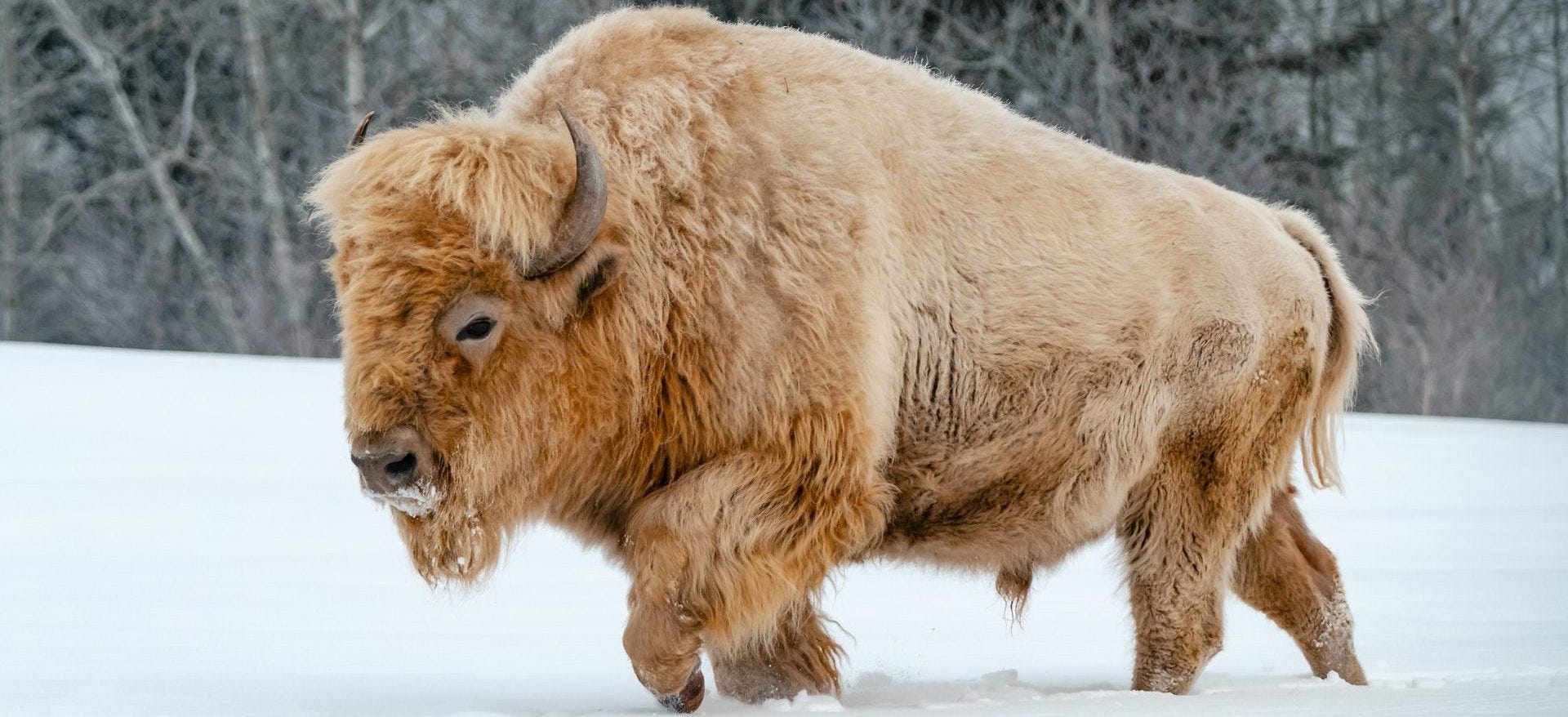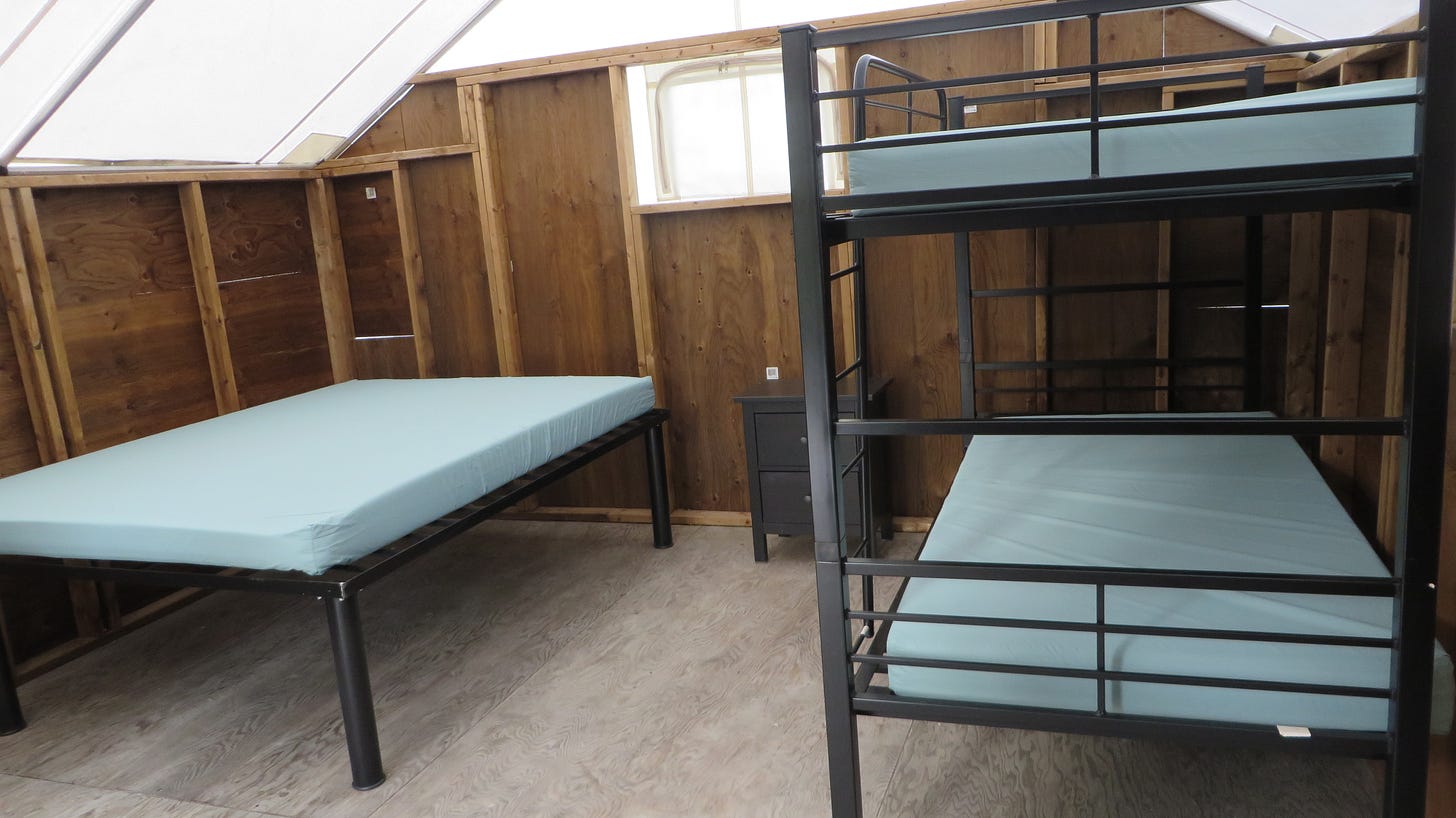Métis Crossing: Where rare white bison roam
Honking of Canada geese drowns out the howl of coyotes.
The wildlife park at Métis Crossing is one of the few places in the world where you can see a rare white bison, as well as wood bison, plains bison, elk, and Percheron horses.
Somehow, we managed to miss them all.
We learned about Métis Crossing late in our planning for the trip to the Rockies and were able to include only an overnight stay in our itinerary. To fully appreciate all that the Métis cultural interpretive centre has to offer, one should plan on at least three days, possibly longer.
We arrived late in the afternoon and had to depart first thing the next morning because of our reservation for a week-long stay at Wapiti Campground in Jasper National Park. (Which never happened because Parks Canada closed the campground on account of wildfires—which we learned en route. But that’s another story.)
Métis Crossing is Canada’s first major Métis cultural interpretive destination 110 kilometres northeast of Edmonton near Smoky Lake. First opened in 2005 as a summer attraction, Métis Crossing just underwent a huge expansion. This is the first winter the site has been open. Winter guests can enjoy unique interpretive programs, a new 40-room guest lodge, a restaurant and lounge, a cultural interpretive centre, a wildlife park, snowshoe and cross-country ski trails, a tubing hill, and an outdoor skating rink.
In summer months, an RV and tent campground is open. Accommodation is also available in eight trapper tents. We stayed in one and appreciated not having to set up our own tent after two weeks on the move. The trapper tents are very simple, with a wood stove and without electricity. Bring your own sleeping bags, sheets and pillows.
The campground, as well as much of Métis Crossing, overlooks the North Saskatchewan River. We heard coyotes at night but the dominant sound came from the flocks of Canada geese overnighting on the river. Many rabbits roamed freely on the property.
Sitting on 688-acres of land, comprised of river lot titles from the original Métis settlers to the region in the late 1800s, the crossing is designed to engage and excite visitors through an exploration of Métis cultural experiences. It was conceived, designed, and built by Métis people to tell their story in their own way in a place that is important in their history.
The bison, or “bufloo” in Michif, the language of the Métis, last roamed these hills in 1865. The historical relationship between the Métis people and bison stems from the bison hunt that brought thousands of Métis people together each spring and fall. Through the gathering of these large communities, the Métis Nation took shape with the development of their own laws, democratic, and judicial systems.
Experts tells us that one in 10 million bison is born white. They are considered sacred by the Métis.
We did not realize that 15 cows and 5 young bulls from nearby Elk Island National Park were brought to Métis Crossing in the spring until we returned home and read in depth about Métis Crossing. All told, there are some 60 white bison, wood bison, plains bison, elk, and Percheron horses in the wildlife park.
Métis people are a post-contact Indigenous nation, born from the unions of European fur traders and First Nations women in the 18th century. The descendants of these marriages, the Métis, would form a distinct culture, collective consciousness, and strong nationhood.
Distinct Métis communities developed along fur trade routes that made the Métis Nation Homeland. Today, the Homeland includes Manitoba, Saskatchewan, Alberta, parts of British Columbia and Ontario, the Northwest Territories, and the northern United States.
The Métis are a robust, thriving community and one of three legally, politically, and culturally distinct Indigenous peoples of Canada, recognized by the Constitution Act of 1982.
In the last census two years ago, there were 624,220 Métis in Canada, with the largest population in Alberta (96,865) where 21.4% of all Métis in Canada live.
Before we settled in for the night in our trapper tent, we enjoyed a Métis-inspired meal at the new lodge: potato soup, bison burger with salad, bison sausage with fries, raspberry ice cream and cappuccino ice cream.
TRIP DATA
Day 13: 3,759 kilometres from home
Next stop: Lakeside Dairy for cheese and beef, Lac Sainte Anne to light a candle, and Tim Hortons for WiFi so we can revise our itinerary on account of wildfires forcing closure of our intended campground in Jasper National Park.







